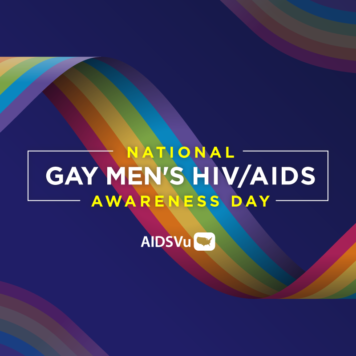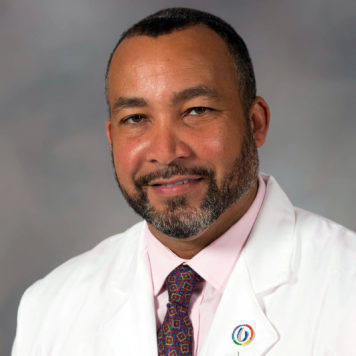Dr. Jeb Jones, PhD, MPH is an Assistant Professor of Epidemiology at Emory University’s Rollins School of Public Health.
Your research focuses on the behavioral aspects of HIV prevention among Men who have Sex with Men (MSM) and ways to use the internet to increase access to HIV prevention. What drove you to this line of research?
I came into HIV epidemiology and prevention from a background in psychology. As a researcher, I’ve always had an interest in understanding why people behave the way they do, and ways that we can identify predictors of health. As I was entering the field of HIV prevention in 2010, Pre-Exposure Prophylaxis (PrEP) trials were coming to an end and it was being introduced as a new, highly effective biomedical HIV prevention tool. It became clear that we had the tools that we needed to not only prevent HIV but also have people take control of their HIV prevention themselves. Yet we faced the challenge of implementing these tools and increasing accessibility, so we turned to the internet. Smartphones were becoming widely popular, so we developed digital tools that people could hold in their hands, which has proved to be an effective method of breaking down some of the barriers to accessing the highly effective tools that we have to prevent HIV.
In a 2021 study, you explored PrEP use among MSM in urban and non-urban settings. What are the similarities and differences in the experiences of urban and non-urban PrEP-using men, and what do these findings tell us about PrEP use in general?
In one study, we used data from the American Men’s Internet Survey to look at the PrEP Cascade at different levels of urbanicity. The PrEP Cascade refers to the varying levels of awareness and acceptance of PrEP – if people are aware that it exists, are willing to use it, have talked to a provider about it, and ultimately if they initiate PrEP use. We found while there were small differences, the proportion of people aware of PrEP remained high regardless of urbanicity. Although the numbers were slightly lower, most people, regardless of urbanicity, were also willing to use PrEP.
Yet the number of people who had discussed starting PrEP with their healthcare provider was significantly lower. There was an even more significant decrease in terms of who had initiated PrEP use. Men in urban areas were much more likely to have discussed or used PrEP than men in suburban and rural areas. The HIV risk and need for PrEP is similar regardless of location, but disparities in access to PrEP persist. There are many reasons for these disparities, including heightened experiences of stigma and higher levels of concern about being outed among MSM in more rural areas.
In another study, we looked at PrEP-using MSM living in urban and rural areas in the southern United States. Among the men in this study, we did not observe any significant differences in sexual behavior or adherence to PrEP by urbanicity. Once men were able to talk to a provider and initiate PrEP use, their sexual behavior and adherence to PrEP all remained similar regardless of urbanicity.
In June, you published a study that highlighted the use of mobile phone apps for HIV prevention. What are the internet-based approaches to delivering HIV prevention?
There are several internet and mobile app-based tools that provide HIV prevention information and services, and many of them follow the premise of providing their users with the necessary knowledge and tools to implement a plan to get tested regularly and remain aware of their HIV status. This ultimately allows them to take control of their own sexual health. One of the apps that we tested is called HealthMindr, which is essentially an HIV prevention portal for MSM. The app includes a self-assessment that allows users to determine their current HIV risk and PrEP indications, links users to PrEP providers in their area, and allows users to order HIV and STI tests to their homes.
In this study, we were interested in the experiences of rural sexual and gender minority individuals. We redeveloped the app Health Minder into an app called Combine, showed it to potential users, and asked for their input. There were high levels of interest in the app from participants living in rural areas of the South, likely because it was appealing for them to be able to obtain accurate information about HIV and STI prevention and discreetly have test kits shipped to their home. While most of the studies that we’ve conducted on these apps have focused on folks living in more urban areas, there is a demand for these services among rural Gay and Bisexual Men and other gender minority individuals.
Your 2021 paper on how COVID-19 has impacted PrEP-using MSM suggested reduced access to and utilization of HIV services coupled with a continuation of behaviors that confer STD/HIV risk. What lessons can we take away from the COVID-19 pandemic in terms of HIV prevention and care?
This paper was based on the study of PrEP-using MSM in the South that I referenced earlier. Over 16 weeks, our participants answered surveys every two weeks about their sexual behavior and PrEP use. COVID-19 began while the study was underway, and we continued collecting these data actively through the beginning of the pandemic. We were following several participants when the pandemic first hit, and several participants had just concluded their surveys. We asked all participants to return for a one-time survey in June to report their PrEP use and sexual behavior over the months since the pandemic began. From their responses, we observed an initial decrease in reported sexual behavior when the pandemic began and the participants entered lockdown, but those rebounded to normal levels relatively quickly. We also observed corresponding decreases in PrEP adherence, with some participants reporting discontinuing PrEP altogether. Yet, unlike sexual behavior, PrEP use did not rebound as quickly.
One of the greatest lessons from this study is that easy access to healthcare is a key aspect of continuing PrEP use over time. Our findings from this study highlight the importance of services such as Tele-PrEP, which allows users to access PrEP online and begins to break down barriers to HIV prevention.
September 27 is National Gay Men’s HIV/AIDS Awareness Day, a day to help fight HIV stigma and encourage HIV testing, prevention, and treatment among MSM. What message do you have for the community on this day?
National Gay Men’s HIV/AIDS Awareness Day is a good day to remind ourselves, as a community, how far we’ve come with respect to HIV prevention and treatment. I entered this field around the time when PrEP was initially becoming available to the public, and the strides that we have taken since then with respect to HIV prevention are astounding. It is important to remind ourselves that we have the tools that we need to be able to effectively prevent and treat HIV, while also recognizing that we have a long way to go in terms of equitably implementing these prevention and treatment tools. On the individual level, it is also a good day to remind ourselves of the importance of testing regularly so that we can know our own HIV status.



